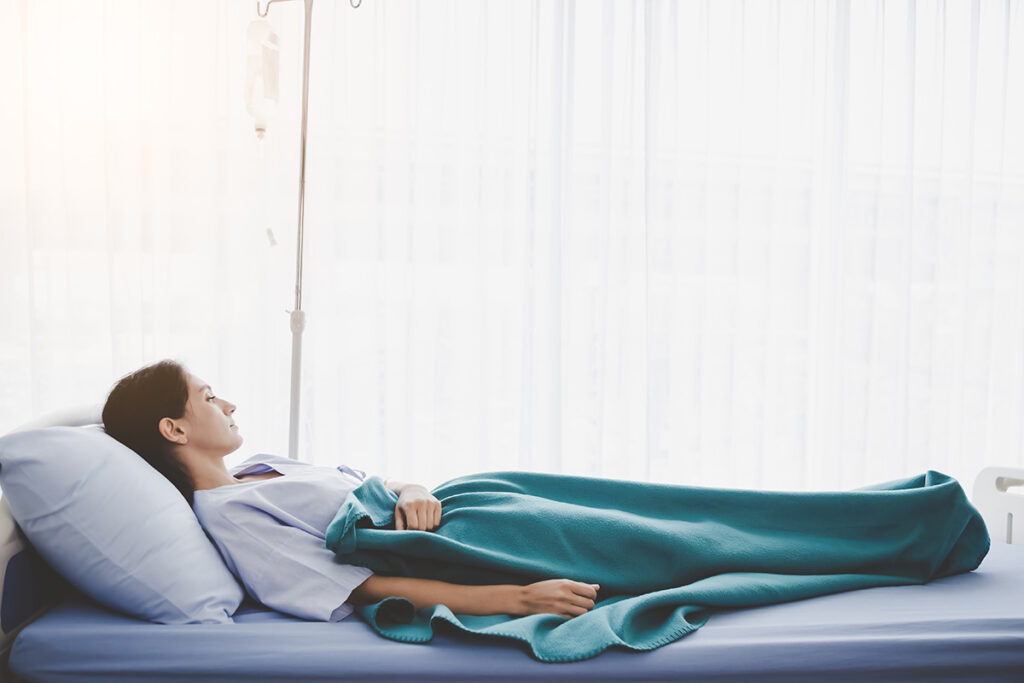Post-operative Course
Inspire hypoglossal nerve stimulator implantation is done in an ambulatory surgery center but can also be done in a hospital, depending on the overall health of the patient. It is typically an outpatient procedure, and most patients go home the same day.

Recovery
Rest for the first few days after surgery. Avoid strenuous activity for about two weeks, or as directed by your doctor. Strenuous activity can increase your heart rate and blood pressure, which can increase the risk of bleeding.
Avoid lifting your right arm above your shoulder for one month after surgery. This will allow the implanted device to firmly settle into place. You can resume your normal diet after surgery.
Mild pain, swelling, and bruising at the incision sites are normal and can be relieved with over-the-counter medications. Small doses of opioids may be taken but can increase the risk of poor breathing. Some discomfort with tongue motion is also possible.
1 week after surgery:
This is a quick visit to assess incision healing and to discuss any concerns.
4 weeks after surgery:
You will meet with a clinic staff or Inspire clinical expert to activate (turn on) the device. You are given the remote-control device, it is programmed, and you are taught how to use it.
Weeks 4-8:
Go home and use the device as taught. You will adjust the stimulation levels weekly, titrating higher. The goal is to start feeling better during the day, more rested, less sleepy, snore less at night, less waking during the night, etc. Hopefully, your bed partner will report less snoring, apnea, and gasping.
Week 8 after surgery:
Return to clinic for assessment of response and possible reprogramming of device for improved performance.
We will discuss when and how to get a sleep study to objectively assess how well the Inspire stimulator is treating your sleep apnea. If there is subjective improvement, you are signed up for and logging into the online SleepSync interface, and you are compliant with use, then you can get a home sleep test (HST). Otherwise, we will recommend an in-lab sleep test. The in lab test will allow specially trained sleep technicians to assess sleep and titrate the stimulation levels to maximize benefit and minimize discomfort from over stimulation.
Every 6-12 months:
Follow-up with your surgeon for assessment of use and possible adjustment.
You can make and appointment and follow up at any time for questions or concerns.
Request an Appointment
Take action to finally solve your sinus problems today!
